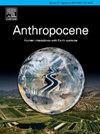Adapting to a shifting planet: The future of Drosera species amidst global challenges and conservation imperatives
IF 3.3
2区 地球科学
Q2 ENVIRONMENTAL SCIENCES
引用次数: 0
Abstract
This study assesses the potential effects of climate change on the distribution of the Drosera genus, which is a carnivorous plant group widely distributed in South America. The Drosera species act as adequate biological indicators, with their fitness performance reflecting the health of ecosystems. Through the application of species distribution models and the analysis of bioclimatic variables, the adaptability of 39 Drosera species to evolving climatic conditions was assessed, revealing their capacity to thrive in diverse habitats, from nutrient-deficient soils to regions with high atmospheric CO2 concentrations. While many species show adaptability, environmental forecasts using two General Circulation Models indicate a decrease in favorable habitats by 2050 and 2070. It is expected that about 71.79 % of species will encounter shrinking habitat suitability, while 28.21 % may see an increase in habitat suitability. This anticipated habitat loss underscores the critical need for proactive conservation measures, including habitat preservation, ecological restoration, assisted migration, and genetic conservation efforts, to counteract the adverse effects of climate change. Additionally, the study highlights the importance of refining species distribution models and deepening our understanding of the ecological dynamics of Drosera species in response to environmental changes. By offering insights into the challenges and opportunities for conserving Drosera species in a changing climate, this work lays a solid groundwork for future ecological research and conservation initiatives. It calls for an integrated approach that combines scientific inquiry with strategic conservation actions to ensure the survival of these unique plant group and ecological integrity during global environmental shifts.
适应一个不断变化的星球:在全球挑战和保护的必要性中,Drosera物种的未来
本研究评估了气候变化对广泛分布于南美洲的肉食性植物群Drosera属分布的潜在影响。Drosera物种作为足够的生物指标,其适应度表现反映了生态系统的健康状况。通过应用物种分布模型和生物气候变量分析,评估了39种Drosera物种对不断变化的气候条件的适应性,揭示了它们在不同栖息地(从营养缺乏的土壤到大气中二氧化碳浓度高的地区)茁壮成长的能力。虽然许多物种表现出适应性,但使用两种环流模式的环境预测表明,到2050年和2070年,有利栖息地将减少。预计71.79 %的物种会出现生境适宜性下降,28.21 %的物种会出现生境适宜性上升。这种预期的栖息地丧失强调了积极保护措施的迫切需要,包括栖息地保护、生态恢复、辅助迁徙和遗传保护工作,以抵消气候变化的不利影响。此外,该研究强调了完善物种分布模型和加深我们对Drosera物种响应环境变化的生态动力学的理解的重要性。通过深入了解在气候变化中保护Drosera物种的挑战和机遇,这项工作为未来的生态研究和保护倡议奠定了坚实的基础。它呼吁采取一种综合的方法,将科学调查与战略保护行动相结合,以确保这些独特的植物群在全球环境变化期间的生存和生态完整性。
本文章由计算机程序翻译,如有差异,请以英文原文为准。
求助全文
约1分钟内获得全文
求助全文
来源期刊

Anthropocene
Earth and Planetary Sciences-Earth and Planetary Sciences (miscellaneous)
CiteScore
6.30
自引率
0.00%
发文量
27
审稿时长
102 days
期刊介绍:
Anthropocene is an interdisciplinary journal that publishes peer-reviewed works addressing the nature, scale, and extent of interactions that people have with Earth processes and systems. The scope of the journal includes the significance of human activities in altering Earth’s landscapes, oceans, the atmosphere, cryosphere, and ecosystems over a range of time and space scales - from global phenomena over geologic eras to single isolated events - including the linkages, couplings, and feedbacks among physical, chemical, and biological components of Earth systems. The journal also addresses how such alterations can have profound effects on, and implications for, human society. As the scale and pace of human interactions with Earth systems have intensified in recent decades, understanding human-induced alterations in the past and present is critical to our ability to anticipate, mitigate, and adapt to changes in the future. The journal aims to provide a venue to focus research findings, discussions, and debates toward advancing predictive understanding of human interactions with Earth systems - one of the grand challenges of our time.
 求助内容:
求助内容: 应助结果提醒方式:
应助结果提醒方式:


